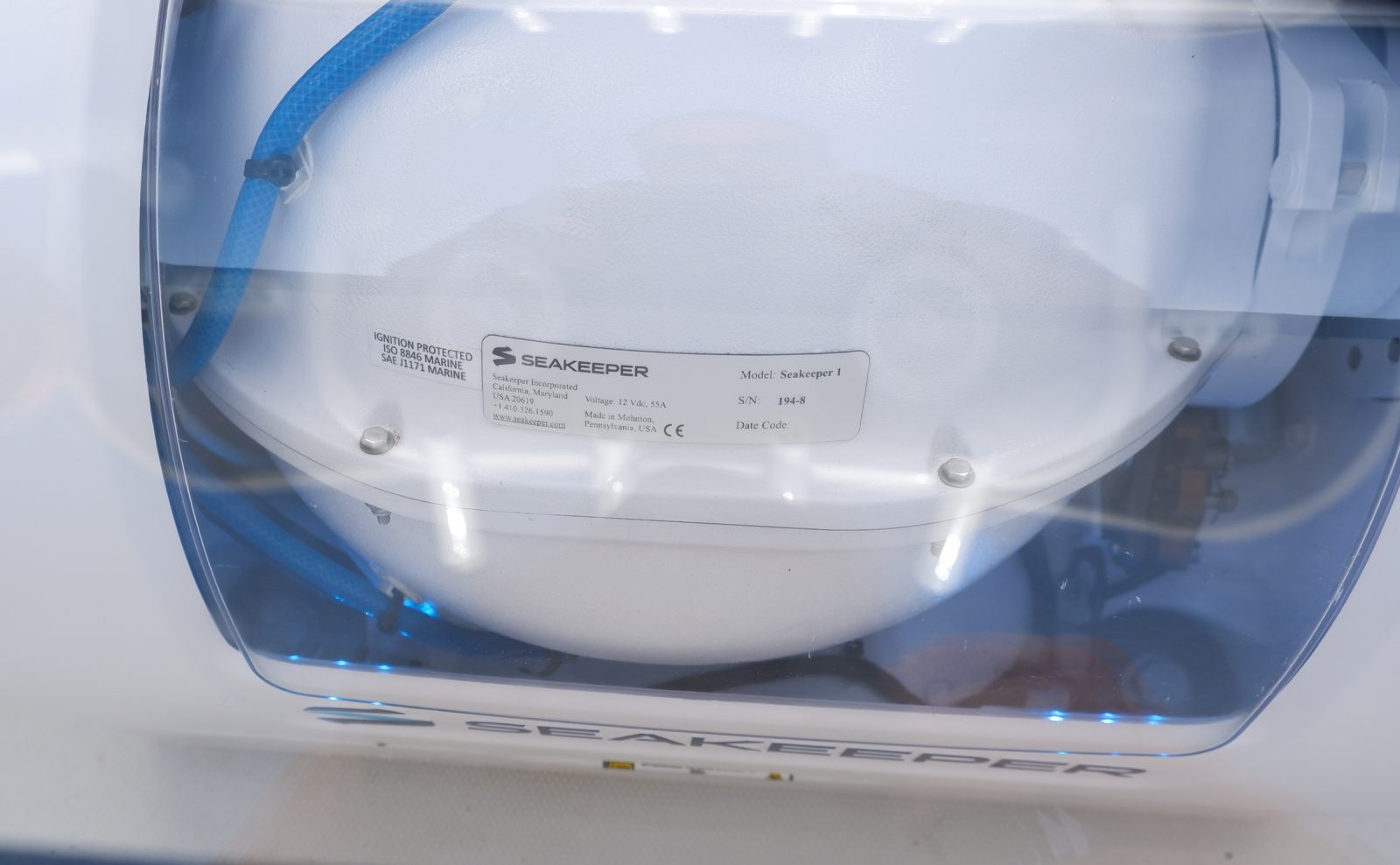MIBS2020: Seakeeper 1 small boat gyro stabilization
The Seakeeper 1 is the newest and smallest member of Seakeeper’s lineup and though a smaller model of a product isn’t always exciting I think the Seakeeper 1 deserves attention. With a $15,000 list price and a target boat size of 23-29 feet the 1 aims at a high volume segment of the boating market and brings the price down to about 10-20 percent of the cost of the boat.

I co-chaired this year’s innovation awards at the Miami show where we awarded the Seakeeper 1 the innovation award for mechanical and electrical systems. I think the new design Seakeeper used to simplify the cost installation and bring the cost down deserves recognition.
With the 1, Seakeeper has redesigned several aspects of the stabilizer to make installation easier and cheaper. The Seakeeper 2 and 3 the units could be mounted directly to the deck of a boat as long as the deck is glued to the stringer system of the boat, which I learned is a common construction technique. But with the 1, they’ve reshaped the flywheel enclosure so that it doesn’t hang below the frame of the unit. This means that the Seakeeper 1 can be installed on the deck of a boat without cutting out the floor below it. The entire unit occupies about the same space as a 65 quart cooler, so it fits under leaning posts, inside of seating and in the cockpit of many boats.

Continuing the theme of simplification, there’s a control panel right on top of the unit to manage the stabilizer. This means it can be controlled without a helm mounted controller, though I suspect most installs will leverage Seakeeper’s MFD integration.
Like the Seakeeper 2 and 3, the 1 is DC powered so it can use the alternator output of the engines. It requires 55 amps at startup and I saw about 14 amps used once it spun up. The Seakeeper 1 spins up to stabilizing speed in just 21 minutes and takes 31 minutes to its full 9,750 RPM speed. That’s a significant improvement from previous units, my Seakeeper 9 takes 38 minutes to reach stabilizing speed and 55 minutes for full speed. They’ve also simplified the braking system on the 1, going to a single cylinder hoseless unit to enable field replacement of the braking system.
I’ve installed a Seakeeper 9 on Have Another Day so I’m quite familiar with the installation process and the impact a gyro can make. But during a demo ride at the show aboard Seakeeper’s demo boat, I was once again reminded the night and day difference a gyro stabilizer can make on the rolling deck of a boat. With the gyro locked (which disables stabilization), the boat pitches in two to three foot chop, but seconds after unlocking the unit the boat begins to simply gently move up and down on the water with nearly zero rolling.
















Very interesting new product.
It would be interesting to compare cost of this unit vs. larger units vs. stabilization torque generated.
The thing is, there is nothing stopping installing multiple smaller units to a larger boat vs. single bigger unit. They could even be energized sequentially according to the sea state. The stabilization might even maybe benefit a little from having multiple units not in sync with each other… Interesting.
As part of my discussion with Seakeeper for this product announcement I learned that their model numbers correspond to the number of newton meters per second of force the stabilizer can deliver. So, the 1 is able to deliver 1,000 newton meters per second while the 2 is 2,000, the 9 is 9,000 and so on.
The list price on the 2 is around 20,000 which makes it $10,000 / 1,000 nms compared to $15,000 / 1,000 for the 1. The 18 has a list price of $120,000 so it’s $6,666 / 1,000 nms. I doubt that the installation of the smaller units is enough cheaper to overcome the cheaper per nms cost of the larger units. But, where multiple stabilizers can be very helpful is if there’s not a spot for one large unit.
-Ben S.
There you go. Good idea, but didn’t quite work out 🙂
When a boat need multiple small units, you must start all of them, otherwise the units working can get overloaded and will fail prematurely. Installing two instead of one is only recommended when you have space issues
Why exactly they have to be all running, if sea state is not that severe? I see no problem starting just some of them first.
Of course they should be alternated so that hours are balanced between the units.